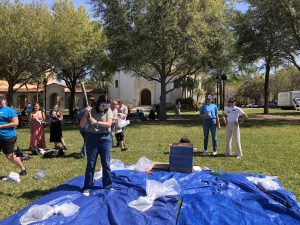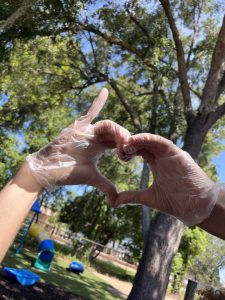With sparkling new buildings and renovations underway, an insightful historian expresses admiration for the historical features of our lakeside campus.
Dear Editor,
As College Historian, I feel an obligation to remind the Rollins community of the college’s rich history and particularly its historic landscape. By that I mean not only its natural but also its built landscape. Three recent developments have raised concern that we are not fully aware of the disappearance of some of the history.
Last year, I watched as the brick road between the Annie Russell Theatre and Crummer/Cornell was demolished and replaced by a new walkway. No one doubts the tastefulness of the new walkway, but no one seemed to realize that the old brick road was the last evidence of the original Fairbanks Avenue which was rerouted when the college built Bush. Just an old brick road, you might argue. No! A visual part of Rollins history just disappeared without a sense of what we had lost.
Later, driving up French, to my disbelief Strong Hall lay in rubble. This historic building, constructed in 1939, and designed by Richard Kiehnel, one of the nation’s most famous architects, was a gift from Mrs. Henry Alva Strong, the wife of the former president of Eastman Kodak Company. She also sponsored the education of numerous students. For almost twenty years, between 1950 and 1968, the building’s courtyard and balcony was the site of an annual Shakespeare celebration. Directed by Professor Nina Dean, students and faculty performed scenes from Shakespeare’s plays before a Rollins audience. The event was always one of the highlights of the school year. Strong Hall was also one of several of our WPA buildings, so called because they were partially funded by the New Deal Great Depression Agency. No one doubts the tastefulness of the new construction but another historic place has disappeared never to be seen again. Inevitably our memories of its history will fade as well.
On the other hand, we should all be pleased with the changes and additions made to Bush Science building. The more attractive parts of old Bush (and there were a few) have been retained and the additions are spectacular. Still, we should be concerned that the building’s scale appears out of proportion to that section of the campus. The building dwarfs the chapel and the theatre, our signature structures. In the future, let us be conscious of size. In Architecture 101, proportion trumps style and utility.
Those of us who have been here a while had been anxiously awaiting the day when the unsightly car spaces were removed from Interlachen Way and replaced with a walkway and beautiful landscaping. No other renovations have been so transforming of the college’s campus center.
Over the years, I have tried to help the college community appreciate the rich historic legacy we have all inherited. The next generation must make certain that the built history of that legacy does not vanish and with it our identity with the visual past.
Dr. Jack C. Lane
College Historian
The opinions on this page do not necessarily reflect those of The Sandspur, its staff or Rollins College.










Be First to Comment